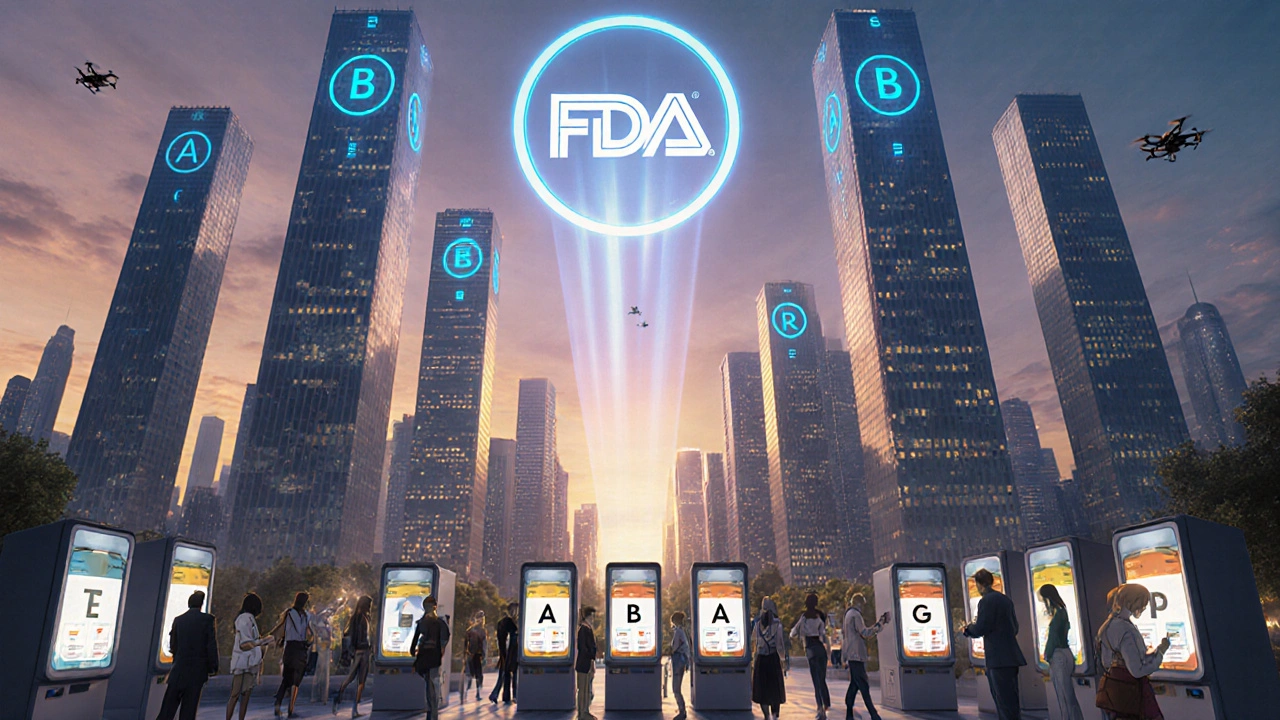 Nov, 16 2025
Nov, 16 2025
When you pick up a prescription, you might not notice the difference between the brand-name pill and the generic one sitting in your bag. But behind that swap is a detailed, science-backed system called Therapeutic Equivalence Codes-or TE Codes. These codes tell pharmacists whether a generic drug is truly interchangeable with the brand version. It’s not just about price. It’s about safety, effectiveness, and trust.
What Are TE Codes and Why Do They Matter?
Therapeutic Equivalence Codes are assigned by the U.S. Food and Drug Administration (FDA) to prescription drugs that have been evaluated for interchangeability. They appear in the FDA’s Orange Book, officially titled Approved Drug Products With Therapeutic Equivalence Evaluations. This system was created in 1984 after the Hatch-Waxman Act made it easier for generic drugs to enter the market. Before TE Codes, pharmacists had no clear standard for deciding which generics could safely replace brand-name drugs. Some states allowed substitution, others didn’t. Patients got inconsistent care. TE Codes fixed that.
Today, every state in the U.S. uses TE Codes as the legal basis for automatic generic substitution. That means if your doctor writes a prescription for Lipitor (atorvastatin), and there’s an FDA-approved generic with the same TE rating, your pharmacist can legally swap it-unless you or your doctor says no. The result? Generic drugs now make up over 90% of all prescriptions filled in the U.S., saving patients and insurers an estimated $2.2 trillion since 1995.
How TE Codes Work: The A and B System
Every drug with a TE Code has a two- or three-letter rating. The first letter tells you the big picture:
- A means the drug is therapeutically equivalent to the brand-name version. It’s safe to substitute.
- B means it’s not equivalent. Don’t swap it.
The second letter gives more detail about the drug’s form and how it was tested. For example:
- AA = powder for oral solution (like levothyroxine)
- AN = injectable solution
- AO = oral solution
- AP = powder for injection
- AT = topical cream
So if you see AA next to a generic levothyroxine, you know it’s been tested and approved as interchangeable with Synthroid. That’s why many pharmacists and patients trust AA-rated generics for thyroid medication-they’re reliable.
The FDA doesn’t just look at the active ingredient. They check:
- Pharmaceutical equivalence: Same active ingredient, strength, dosage form, and route of administration.
- Bioequivalence: The generic must be absorbed into your bloodstream at the same rate and amount as the brand. Studies show the 90% confidence interval for absorption must fall between 80% and 125% of the brand.
- Clinical equivalence: The drug must work the same way in real patients under the same conditions.
This isn’t guesswork. Generic manufacturers submit years of data, including bioequivalence studies, stability tests, and manufacturing details. The FDA reviews every piece before assigning a code.
What TE Codes Don’t Cover
TE Codes are powerful, but they’re not perfect. They only apply to drugs with multiple manufacturers-so if a brand has no generic competitors, there’s no TE code. And they don’t cover every type of drug.
Complex products like inhalers, topical steroids, and certain injectables often have TE codes that don’t fully reflect real-world differences. In 2019, the FDA withdrew TE ratings for some generic budesonide inhalers because patients reported inconsistent dosing-even though the generics passed lab tests. The problem? Tiny differences in how the drug is delivered can change how well it works in the lungs.
Narrow therapeutic index (NTI) drugs are another gray area. These are medications where even a small change in blood levels can cause serious side effects or make the drug stop working. Warfarin (a blood thinner), lithium, and some seizure medications fall into this category. While many NTI drugs have TE codes, some doctors and patients still avoid substitutions. A 2022 study found 12.7% of patients reported feeling different after switching to a TE-rated generic-even though lab tests showed no clinical difference. That’s why some prescribers write “Dispense as Written” on prescriptions for these drugs.

How Pharmacists Use TE Codes Daily
For pharmacists, TE Codes are part of everyday workflow. When a prescription comes in for a brand-name drug, they check the FDA’s Orange Book-either through their pharmacy software (like Epic or Cerner) or the FDA’s public database. If the generic has an “A” rating, they can substitute it unless the prescription says otherwise.
Most pharmacists have high confidence in this system. A 2022 survey by the National Community Pharmacists Association found 91% of pharmacists trust TE-rated substitutions. Pharmacy school programs now include mandatory TE Code training, and 98% of 2022 pharmacy graduates passed the NAPLEX exam on this topic.
It’s fast, too. Verifying a TE code adds less than 30 seconds to prescription processing. The FDA’s Orange Book Help Desk handles about 1,200 questions a month, and most are resolved within two business days.
Real-World Impact: Savings and Patient Experience
TE Codes aren’t just a regulatory tool-they’re a financial lifeline. Generic drugs cost 80-85% less than their brand-name counterparts. In 2022, Americans filled over 6 billion generic prescriptions. That’s billions of dollars saved every year.
For chronic conditions like high blood pressure, diabetes, or high cholesterol, TE-rated generics are the norm. On GoodRx, generic versions of metformin, lisinopril, and atorvastatin have average ratings of 4.7 out of 5 based on thousands of patient reviews. Patients report the same results, fewer side effects, and lower out-of-pocket costs.
But not all experiences are smooth. Some patients, especially those on NTI drugs, report feeling different after a switch-even when the TE code says it’s safe. That’s why communication matters. If you notice a change in how you feel after switching to a generic, tell your doctor. It’s not always the drug-it could be a different filler, coating, or even a change in how your body responds over time.

How the U.S. System Compares to the Rest of the World
The U.S. TE Code system is one of the most detailed and legally integrated in the world. In Europe, the European Medicines Agency (EMA) doesn’t use a standardized coding system. Instead, each country decides whether generics can be swapped. In Canada, there’s a similar concept but no national code list like the Orange Book.
In Germany, substitution is mostly up to the doctor-not the pharmacist. That means even if a generic has the same active ingredient, it won’t be automatically swapped unless the doctor approves it.
The U.S. system works because it’s uniform. A TE code in California means the same thing as one in Maine. That’s why pharmacy benefit managers (PBMs), hospitals, and insurers all rely on it to design formularies and control costs.
What’s Next for TE Codes?
The FDA is working to improve the system. In 2022, they released new guidance to standardize how therapeutic equivalence is evaluated-especially for complex drugs. They’re also testing ways to use real-world patient data (like electronic health records) to supplement lab studies.
By 2024, the FDA plans to extend TE Codes to biosimilars-generic versions of biologic drugs like Humira or Enbrel. These are more complex than traditional pills, so the new codes will need to reflect that.
Industry analysts predict that by 2027, over 93% of all prescriptions in the U.S. will be for TE-rated generics. That’s up from 90.1% today. The goal? Keep lowering costs without sacrificing safety.
What You Should Do
If you’re taking a generic drug:
- Check the label. If it’s a TE-rated generic, you’re getting the same medicine as the brand.
- Don’t panic if your generic looks different. Color, shape, or size changes don’t mean it’s less effective.
- If you feel different after switching, talk to your doctor or pharmacist. It’s worth investigating-even if the TE code says it’s fine.
- Ask your pharmacist: “Is this generic rated as therapeutically equivalent?” They can check the Orange Book in seconds.
For chronic conditions, TE-rated generics are not just safe-they’re the standard of care. For complex drugs, stay informed. The system isn’t flawless, but it’s the best we have-and it’s working.
What does an 'A' rating mean in TE Codes?
An 'A' rating means the generic drug is considered therapeutically equivalent to the brand-name drug. It has the same active ingredient, strength, dosage form, and route of administration, and it’s been proven to work the same way in the body. Pharmacists can safely substitute an 'A'-rated generic without needing the prescriber’s permission.
Are all generic drugs assigned a TE Code?
No. Only multi-source drugs-those with more than one manufacturer-are evaluated for TE Codes. If a drug has only one manufacturer (even if it’s generic), it won’t get a TE Code. Also, single-source generics, complex products like inhalers, and some biologics may not have TE ratings even if they’re approved.
Can I ask my pharmacist to give me the brand instead of the generic?
Yes. Even if a generic has an 'A' rating, you can request the brand-name drug. Your pharmacist can fill it, but you may pay more. Some prescriptions include ‘Dispense as Written’ or ‘Do Not Substitute’-this legally prevents substitution regardless of the TE Code.
Why do some patients say they feel different on a generic?
Even with identical active ingredients, generics can have different inactive ingredients (fillers, dyes, coatings). For most people, this doesn’t matter. But for patients on narrow therapeutic index drugs like warfarin or levothyroxine, even small changes in absorption can cause noticeable effects. It’s not always the drug’s fault-sometimes it’s how your body adjusts. Always report changes to your provider.
Where can I check a drug’s TE Code?
You can look up TE Codes in the FDA’s online Orange Book at fda.gov/orangebook. Many pharmacy systems also display TE ratings automatically when processing prescriptions. If you’re unsure, ask your pharmacist-they can check it in seconds.